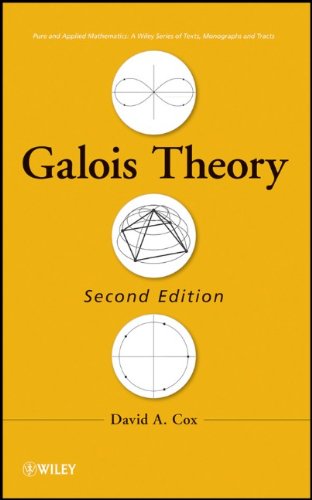

Most ebook files are in PDF format, so you can easily read them using various software such as Foxit Reader or directly on the Google Chrome browser.
Some ebook files are released by publishers in other formats such as .awz, .mobi, .epub, .fb2, etc. You may need to install specific software to read these formats on mobile/PC, such as Calibre.
Please read the tutorial at this link. https://ebooknice.com/page/post?id=faq
We offer FREE conversion to the popular formats you request; however, this may take some time. Therefore, right after payment, please email us, and we will try to provide the service as quickly as possible.
For some exceptional file formats or broken links (if any), please refrain from opening any disputes. Instead, email us first, and we will try to assist within a maximum of 6 hours.
EbookNice Team

Status:
Available4.7
22 reviews''. . .will certainly fascinate anyone interested in abstract algebra:a remarkable book!''
— Monatshefte fur Mathematik
Galois theory is one of the most established topics in mathematics, with historical roots that led to the development of many central concepts in modern algebra, including groups and fields. Covering classic applications of the theory, such as solvability by radicals, geometric constructions, and finite fields, Galois Theory, Second Edition delves into novel topics like Abel’s theory of Abelian equations, casus irreducibili, and the Galois theory of origami.
In addition, this book features detailed treatments of several topics not covered in standard texts on Galois theory, including:
Throughout the book, intriguing Mathematical Notes and Historical Notes sections clarify the discussed ideas and the historical context; numerous exercises and examples use Maple and Mathematica to showcase the computations related to Galois theory; and extensive references have been added to provide readers with additional resources for further study.
Galois Theory, Second Edition is an excellent book for courses on abstract algebra at the upper-undergraduate and graduate levels. The book also serves as an interesting reference for anyone with a general interest in Galois theory and its contributions to the field of mathematics.